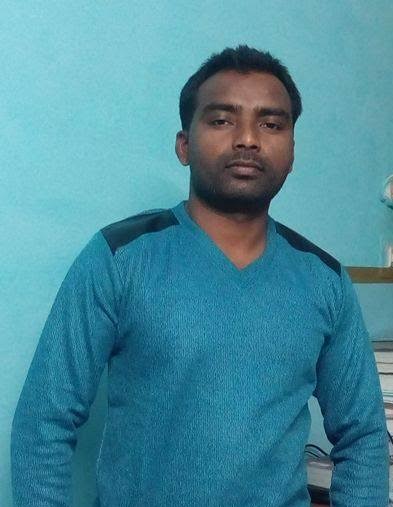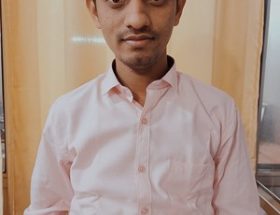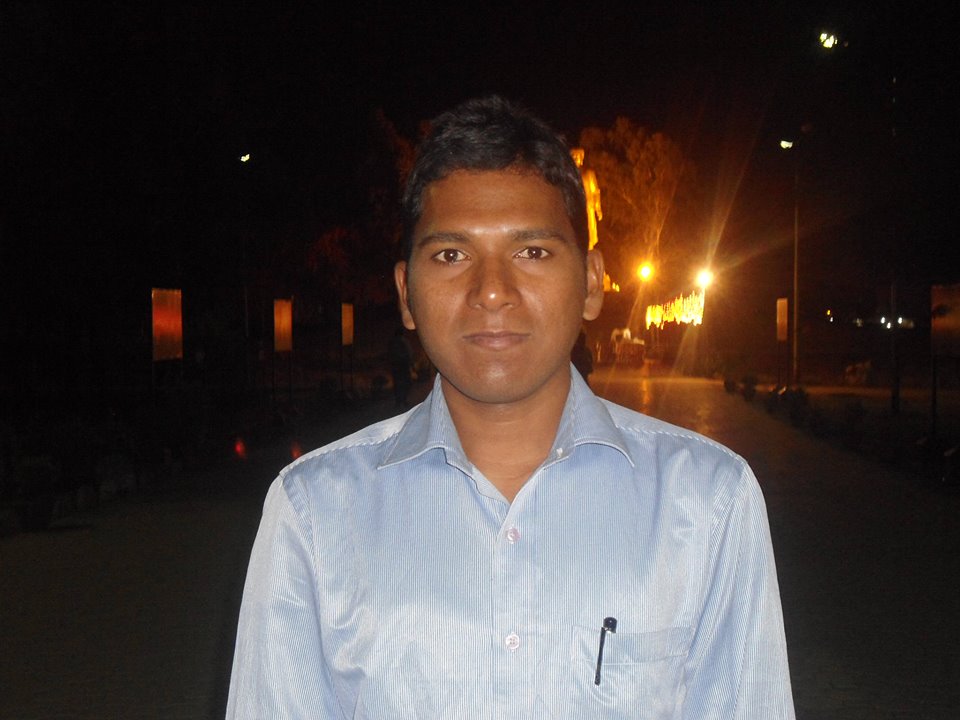Bansidhar Deep
 Indira Gandhi used the “Garibi Hatao” rhetoric to defend her contempt for constitutional morality, while the present BJP (Bharatiya Janata Party) government uses the rhetoric of “Sabka Vikas” and “Shreshth Bharat” to adopt the same cynical approach (Suhas Palshikar, Indian Express July 15, 2016). There was a time when India, after independence, was talking about production of food grains and crops, so that the country’s people will not face food grain shortage. That is why the so-called “green revolution” was ushered in the sixties-seventies although it was confined to northern India only. Today there is enough production, but people are not getting food and lack of food is causing deaths. Most recently, in Odisha (Jaipur district, Nagada village) 26 children died due to malnutrition/poverty. And this can be seen in most of the places in Odisha in particular and India in general.
Indira Gandhi used the “Garibi Hatao” rhetoric to defend her contempt for constitutional morality, while the present BJP (Bharatiya Janata Party) government uses the rhetoric of “Sabka Vikas” and “Shreshth Bharat” to adopt the same cynical approach (Suhas Palshikar, Indian Express July 15, 2016). There was a time when India, after independence, was talking about production of food grains and crops, so that the country’s people will not face food grain shortage. That is why the so-called “green revolution” was ushered in the sixties-seventies although it was confined to northern India only. Today there is enough production, but people are not getting food and lack of food is causing deaths. Most recently, in Odisha (Jaipur district, Nagada village) 26 children died due to malnutrition/poverty. And this can be seen in most of the places in Odisha in particular and India in general.
It is very painful to mention that currently the Dalit/Adivasis of Malkangiri are struggling against Japanese Encephalitis. According to the State Health and Welfare Department, at least 295 children have been affected by Japanese Encephalitis. And more than a hundred children have died of Japanese Encephalitis across seven blocks in Malkangiri in the span of 60 days and it is still continuing. The Zilla Adivasi Samaj Mahasangh had disrupted vehicular movement in the district, while shops and businesses remained shut from 6 a.m. till late evening on Tuesday, November 8, (November 8, 2016, in NDTV news). Members of the group took to the streets of Malkangiri, protesting with posters and placards. The protest has been against the failure of the state government to stop Japanese Encephalitis and provide minimum basic health facility to the people of Odisha. In other words, the state government has not been giving much attention to the problems and concerns of the Western part of Odisha. This is the reason malnutrition, deaths of children by incurable diseases, poverty, and starvation are regularly reported from the Western part of Odisha.
Who are the victims of malnutrition and poverty in Odisha? According to my observation and experience the Scheduled Castes and Scheduled Tribes are the predominant victims of malnutrition and poverty. These are the people living below poverty line (BPL). For example, in my village Kandabutura situated in Kalahandi district, 90 per cent households are living below poverty line. And 95 per cent people are SCs and STs.
Odisha stands second among the 14 states in the country with the highest incidence of poverty after Bihar. The incidence of poverty had been 57.20 per cent in Odisha, in 2004-05. However, Odisha has expressed satisfaction that it has recorded the highest reduction in poverty among all major States between 2004-05 and 2011-12. It claimed that the poverty has declined by 24.61 percentage points from 57.20 per cent in 2004-05 to 32.59 per cent in 2011-12. The reduction of poverty by 25.11 percentage points was higher in rural Odisha than that of 20.31 percentage points in urban Odisha (PNS in The Pioneer, Wednesday, 18 June 2014). Despite all this, the recent example of deaths of children in Jaipur district, the Dana Majhi incident (mentioned later) and the ongoing struggle against Japanese Encephalitis at Malkangiri district to stop children deaths in Odisha, have again proven that the government is badly handling the problems of malnutrition, poverty and health. And further, this requires reflection upon many issues related to Odisha and its underdevelopment in terms of the socio-political and economic benchmarks.
The Scheduled Tribes (STs) population in the State of Odisha is 95,90,756. This constitutes 22.85 per cent of the total population of the State and it is ranked third (numerically) in terms of ST population of the total tribal population of the country. The SC population in the state is 71,88,463, this constitutes 17.13% per cent of the total population of the State; its position is eleventh (numerically) in terms of SC population in the country. Scheduled Tribes and Scheduled Castes together constitute nearly 40% of the State’s Total Population (As per the latest 2011 census).
Malkangiri district has the highest proportion of STs (57.4 per cent) followed by Mayurbhanj (56.6 per cent), Rayagada (55.8 per cent) and Nabarangapur (55 per cent) (Ibid). Apart from Tribals, scheduled castes also live in very bad conditions in this area. Overall both SCs and STs are the majority in many of the districts in the state but still they are backward because the state has not paid much attention over these areas. And perhaps because of this majority the state does not want to improve their conditions in education, policies, unemployment, economy and development in a real sense. Because once they are united and gain socio-political consciousness then the hold of upper-castes over them will be lost. Therefore, in Odisha SCs/STs must come together.
High Child mortality is prevalent not just in one village but throughout the state as Odisha is a backward state in terms of politics, economics, and social development. So, one can see it in most of the villages where people are dying due to “starvation” and facing chronic poverty. The question is why are they dying? The simple answer is that people are not getting proper food, which causes many incurable diseases leading to death. But one can draw attention to the fact that there are many reasons to understand why these particular parts of Western Odisha – also known as KBK (Koraput, Bolangir and Kalahandi)- are the most backwards districts in India where starvation and poverty rates are high. The Sonepur, Nuapada, Rayagada, Nabarangapur, and Malkangiri districts of this region are also part of the Kalahandi-Balangir-Koraput or “KBK” area, noted for its high death rate from “starvation” and poverty.
First, this area is mostly covered by hills and jungle where very less land can be cultivated. Secondly, these areas are deprived of government facilities and are poorly connected to the world. This area does not have any hospitals and basic health facilities for them to get proper treatments for the diseases, no schools for the children, no electricity in the villages, no source of proper drinking water, no road connection, and no livelihood for them. Malaria is high in this area, almost everybody is affected by it. The health system in Odisha is worse than anywhere else. No doctors are available; no health facilities exist in the nearby places. The mortality rate is high. Malnutrition is high. Health awareness is poor. Superstition is prevalent and so on. The villagers have their job cards to work under various rural development programs but they have no work. There is no proper mechanism and no efforts to handle all these connected problems by the government. Most of the government policies are not being implemented in this area. The irony of the political democracy is that the citizens of this country are yet to get the basic facilities from the states which is supposed to uphold and ensure social justice for the Tribals, Dalits and the other oppressed communities in India.
In a 1949 speech, Dr. Ambedkar said:
“On the 26th of January 1950, we are going to enter into a life of contradictions. In politics we will have equality and in social and economic life we will have inequality. In politics we will be recognizing the principle of one man one vote and one vote one value. In our social and economic life, we shall, by reason of our social and economic structure, continue to deny the principle of one man one value. How long shall we continue to live this life of contradictions? How long shall we continue to deny equality in our social and economic life? If we continue to deny it for long, we will do so only by putting our political democracy in peril. We must remove this contradiction at the earliest possible moment or else those who suffer from inequality will blow up the structure of political democracy which is Assembly has to laboriously built up” (Dr. Ambedkar delivered a speech on constitution on 25th November 1949).
Western Odisha comprises of districts like Koraput, Malkangiri, Raigada, Kalahandi, Bolangir, Sambalpur, Sonpur, Nabarangpur, Kandhamal and the region has enough natural resources but it is ironic that people are still fighting for their life in terms of basic amenities. In Western Odisha there are two dams (Hirakud dam at Sambalpur and Indrabati dam at Kalahandi) which produce electricity as well as irrigate the areas but why do people belonging to the same regions are still deprived of electricity in their homes? There are some industries in the areas such as Vedanta metallurgical industries at Jharsuguda, Dhamanjodi National Aluminium Company Limited (NALCO), Vedanta Aluminium refinery at Kalahandi, Raurkela steel industry and others but still people are migrating a lot to the other states in search of jobs and employment. And this high level of migration rate proves that they are in poverty and jobless. So there is a false notion of many governments that they propose more industries and privatization which will bring more development and create more jobs but in fact that is not the case rather they are deprived of jobs, land, education and resources.
Ultimately who is responsible for this poverty and malnutrition in Odisha? First of all the state government Biju Janata Dal (BJD) is responsible for the backwardness because despite being in power for more than two decades they have done very little work for the development of Tribals and Dalits in Odisha. Instead, the government claims to be a so-called secular democratic party. But this party is also one of the many political parties of upper-castes under whose rule the oppressed are in constant threat. That is the reason Dalits and Tribals are in a vulnerable condition in Odisha. At the same time the central governments- the previous UPA (United Progressive Alliance) government as well as the current BJP government are also responsible because they have failed to respond to the problems of Tribals and Dalits in most states including Odisha.
In fact, the term “development” needs to be critically examined, Modi’s government too came to power in 2014 in the name of development. And this rhetoric is being chanted by almost all the governments but still the conditions of SCs/STs and other marginalized communities are vulnerable. For example, recently Dana Majhi from Kalahandi, Odisha had to carry his wife’s dead body on his shoulder because the administration or the state apparatus could not help him to take his wife’s dead body in an ambulance. Rather, after this government the atrocities on SCs/STs and other marginalized groups have been increasing in the country. Their everyday life has become insecure and unsafe in every place, be it in the universities, colleges, and politics, rural and urban regions. The state is not working as a ‘state’ in the normative sense but religion has replaced the state. And this culture is a big threat for democracy. In this context what Dr. Ambedkar has to say is very important:
“Will history repeat itself? It is this thought which fills me with anxiety. This anxiety is deepened by the realization of the fact that in addition to our old enemies in the form of castes and creeds we are going to have many political parties with diverse and opposing political creeds. Will Indians place the country above their creed or will they place creed above country? I do not know. But this much is certain that if the parties place creed above country, our independence will be put in jeopardy a second time and probably be lost forever. This eventuality we must all resolutely guard against. We must be determined to defend our independence with the last drop of our blood” (Ibid).
Now this statement by Dr. Ambedkar gives some assumptions not only to critically look at the governments in the different states but also do the same with the central government. Whether governments follow the constitution or not? How government implements the principle of secularism? For instance, Odisha government does not work for the people properly. In other words, these days governments work less for the people according to the constitution but work for the party and their ideology.
“Though Adivasis, Dalits and SEBCs constitute a majority of the population but the post independent Odisha continues to be ruled over by upper caste people, including the former kings and feudal lords, land owning class and western educated persons etc. It has created huge imbalance in social life. The Hindu upper caste cultural symbols, language and social practices are projected as Odia nationality. The public institutions, Government offices and media are using this with active State patronage” (Manas Jena in the ‘pioneer’ Saturday, 23 January 2016). Thus in Odisha, Jagarnath and Hindutva are prevalent. Because of this kind of role of governments education is undermined and the religious mindset is propagated. Thereby stopping the scientific and rational thinking among students. Due to a more religious mindset, people can be quite superstitious and casteist in their behavior. I think this kind of notion of mind can be changed only when they will be educated intellectually. For instance Ambedkar said “educate”, “agitate” and “organize” to change the society which will be based on liberty, equality and justice. Now Odisha needs unity among the oppressed in general, and SCs and STs in particular along with socio-political consciousness which can help the state towards development with different political voices. And this may help people to overcome poverty and malnutrition.
~~~
Bansidhar Deep is a Research Scholar at Centre for Philosophy, Jawaharlal Nehru University, (JNU), New Delhi. His area of interest includes Lived Experience, phenomenology, hermeneutics, socio-political philosophy, feminist philosophy, Ambedkar. He is currently researching on “Theory of Lived Experience: the Idea of Historicity and Social in Wilhelm Dilthey and Alfred Schutz”.









